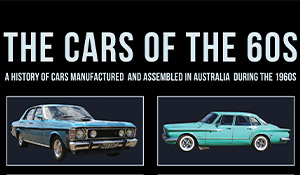Austin's Final Fling
Austin very nearly went bust but an inspired meeting at his Birmingham mansion with a draftsman resulted in the production of the ubiquitous Austin 7, the car that put England on wheels. In so many ways the 7 was to England what the Model T was to America.
After the war the best-selling car in Australia until 1950 was the Austin A40; it lost the mantle once Holden was able to ramp up production of the 48/215 to meet the seemingly insatiable demand. Through the 50s Austin (by now part of BMC) was selling the 4-cylinder A50/55 Cambridge and 6-cylinder A90/95 Westminster and as the decade ended they announced the Farina-designed A40 and A60. The latter car morphed into the Freeway.
From there the Austin name appeared only on the much under-rated Austin 1800, the largest front-wheel drive family car at the time. It was derided by the media—surprise—but it was a good car as a conservative family car, its intended purpose in life. The Mark I was uprated to the Mark II but sales were slow. In an effort to put some sparkle in the model BMC Australia engineers took an unused (by Longbridge) derivation of the 1800 and produced it at Zetland in two versions, the base Tasman and better trimmed Kimberley.
These cars have a unique place in the world history of the automobile—they were the first to feature a transverse six-cylinder in-line engine with front-wheel drive and a fully independent suspension system. This took place for a release in 1970, two years before the Poms announced their versions (in the old body) and years before the rest of the world caught on.
Again, the local media derided the cars but were they that bad? The simple answer is no, but it would be fair to say that quality control at BMC was not good and, particularly with the Mark I, there were some reliability issues with the engine. The Mark II was much better.
Their performance was more than adequate for a family sedan—they could run to around 90-95mph, cruise easily and quietly at 70mph with excellent stability, had decent acceleration and good economy—although they were no match for the bigger-engined Holden/Ford/Chrysler competition except in top speed. They were, however, supreme touring family cars, much better then the other three. They had less mechanical noise, their interior was roomier than a Kingswood, were much more comfortable to sit in for long distances, the boot was huge and the ride from the Hydrogas suspension was light years ahead of the others.
Sadly, in the bigger scheme of things they were a stop-gap model pending the arrival of the Leyland P76 which took Leyland into direct competition with Holden, Ford and Chrysler.
















